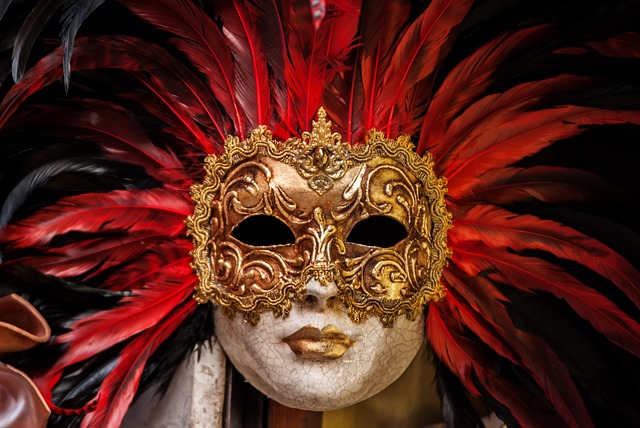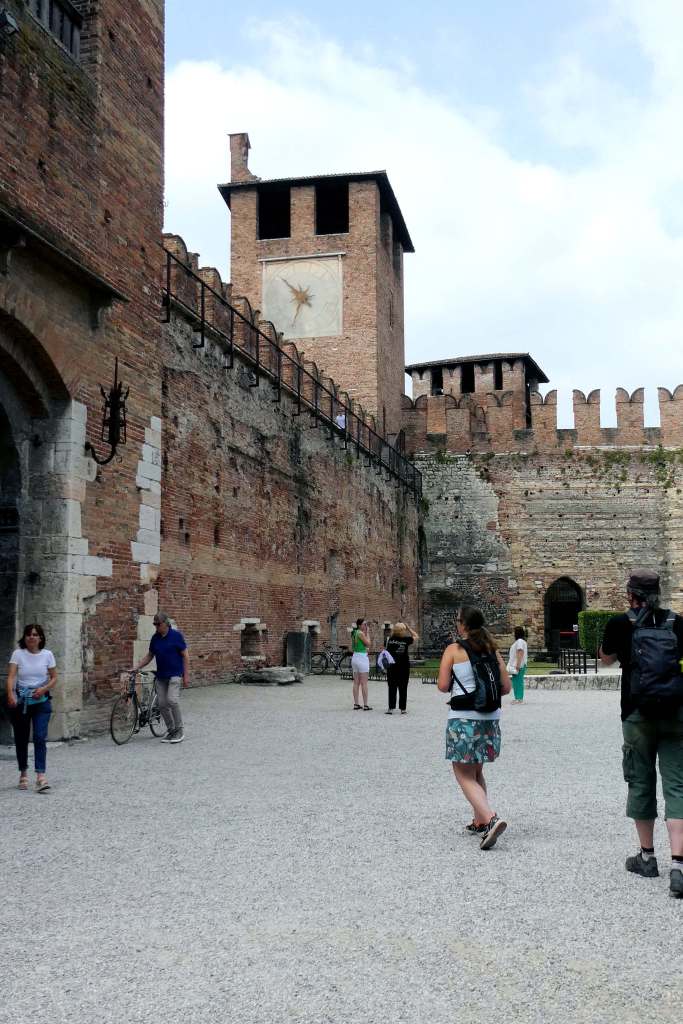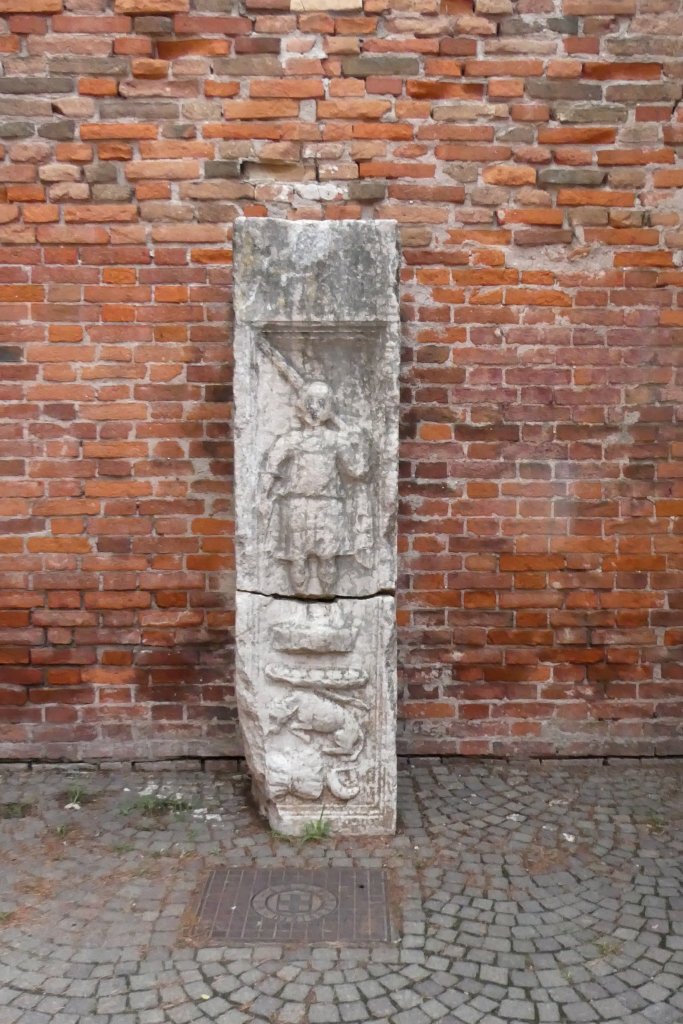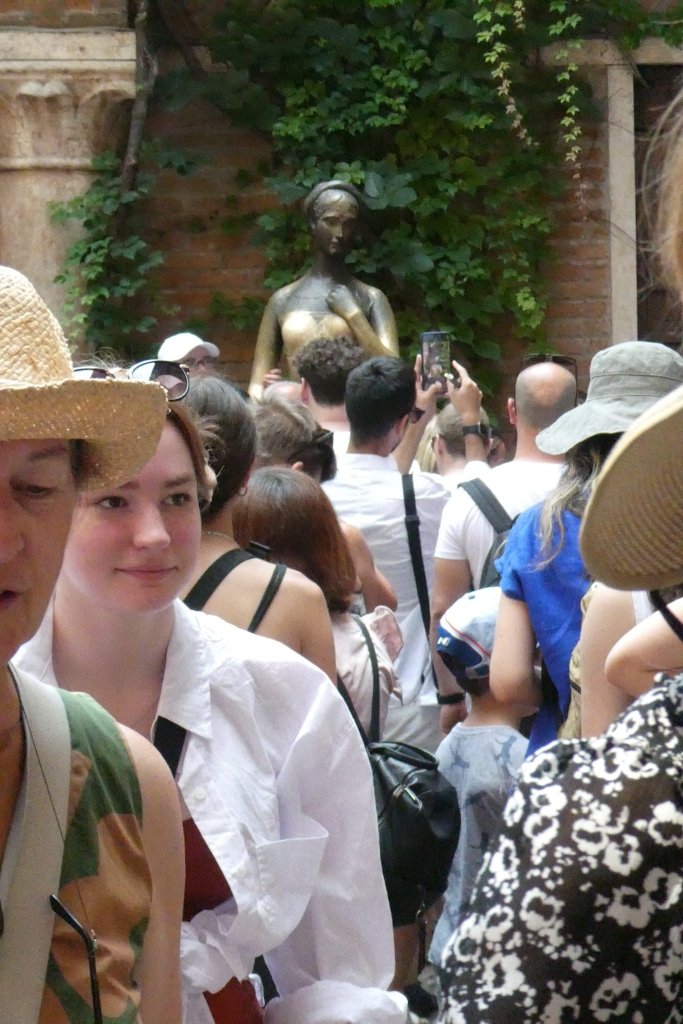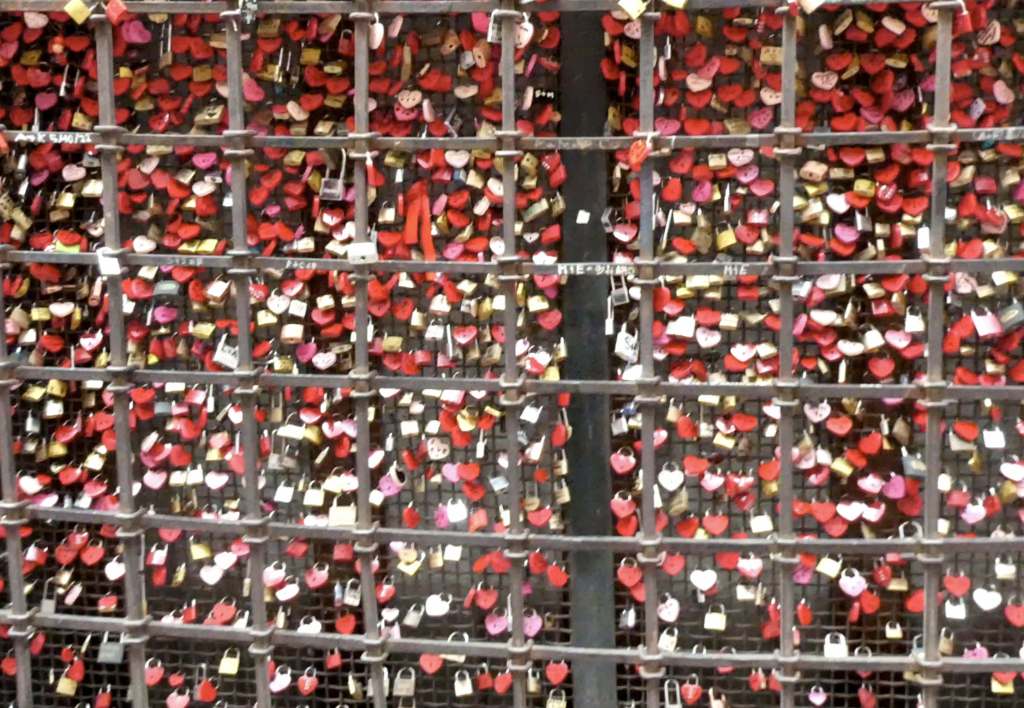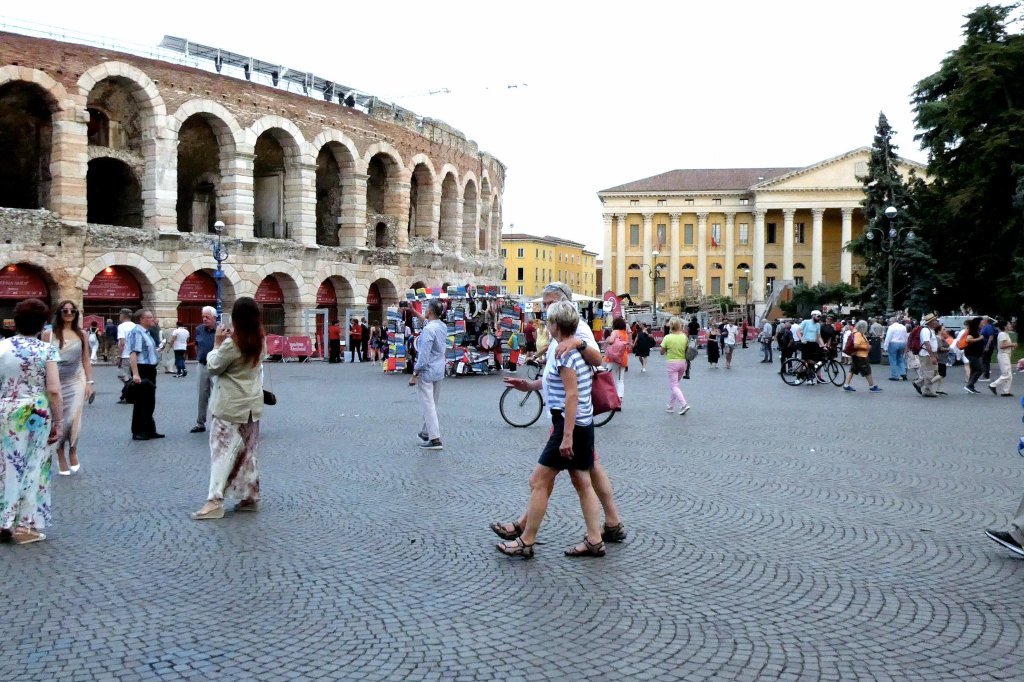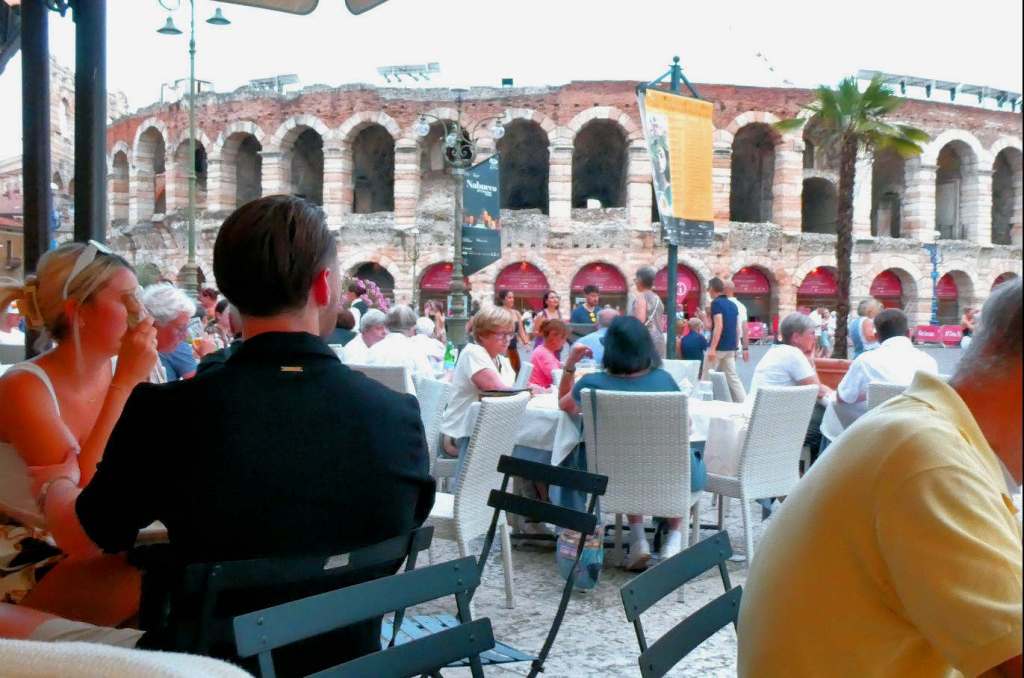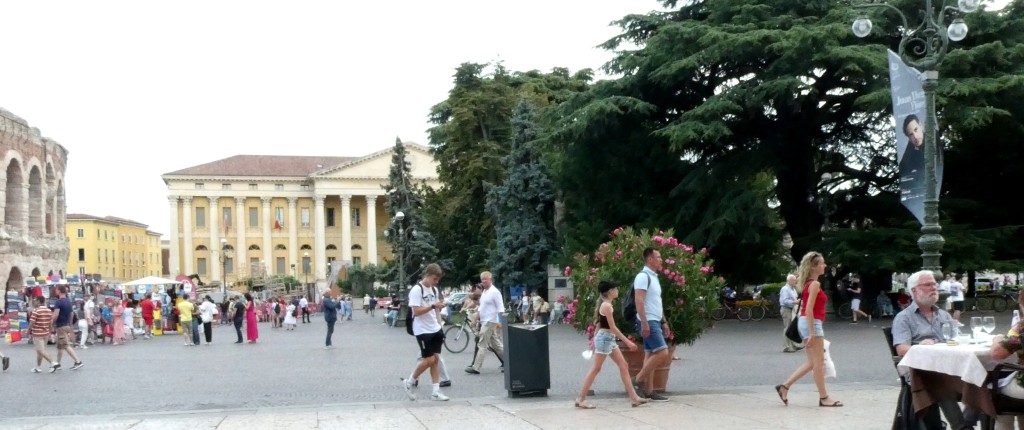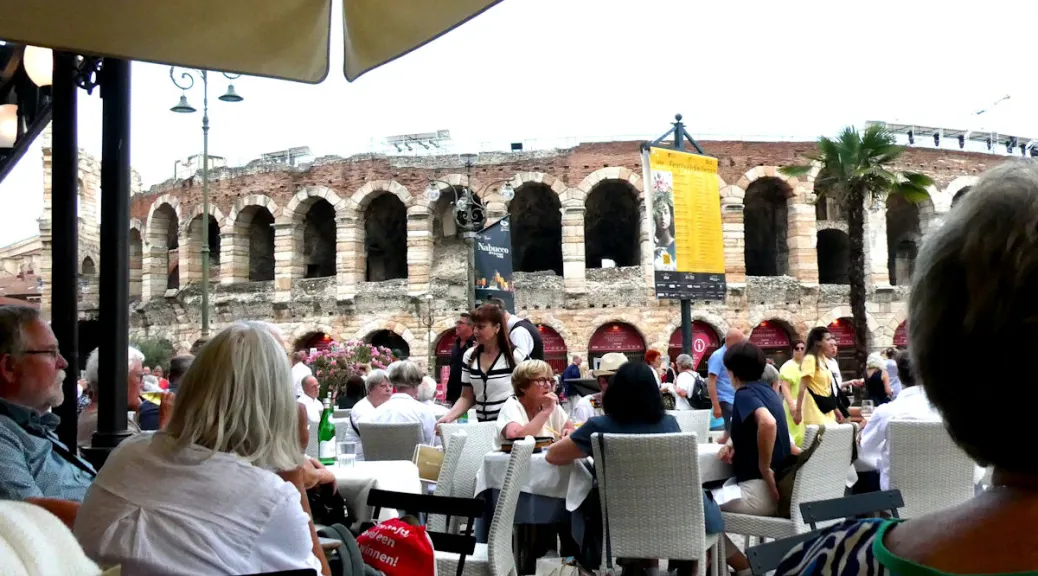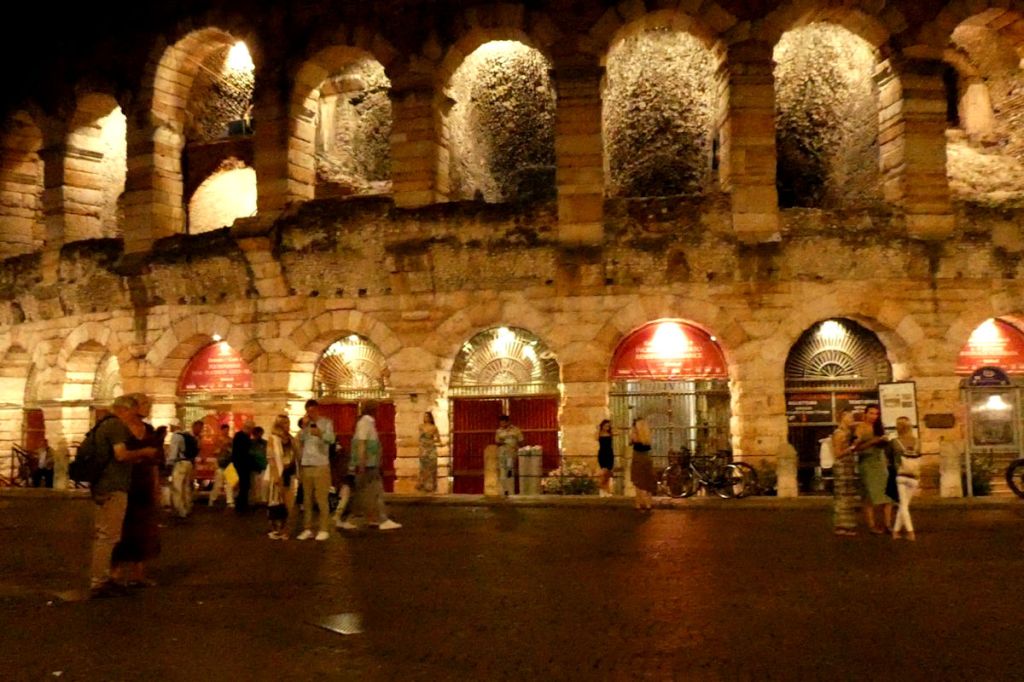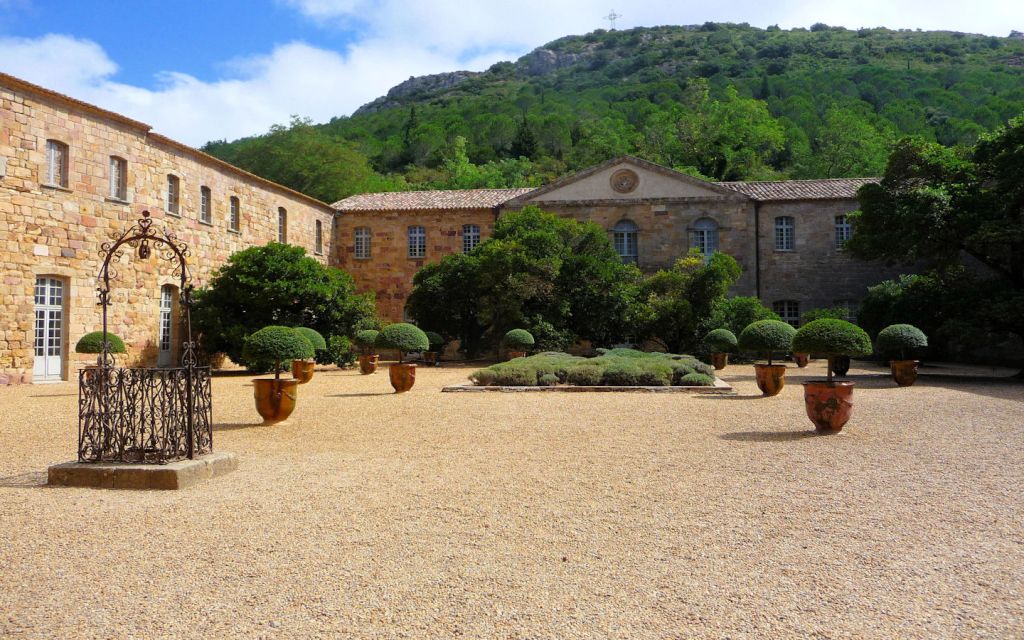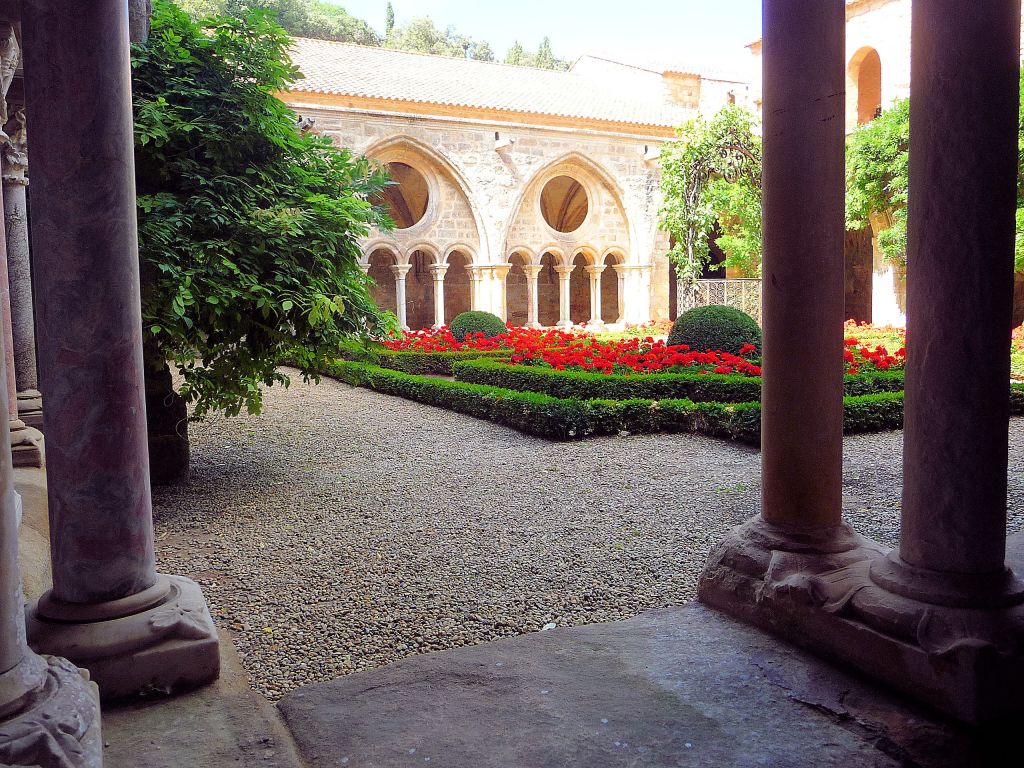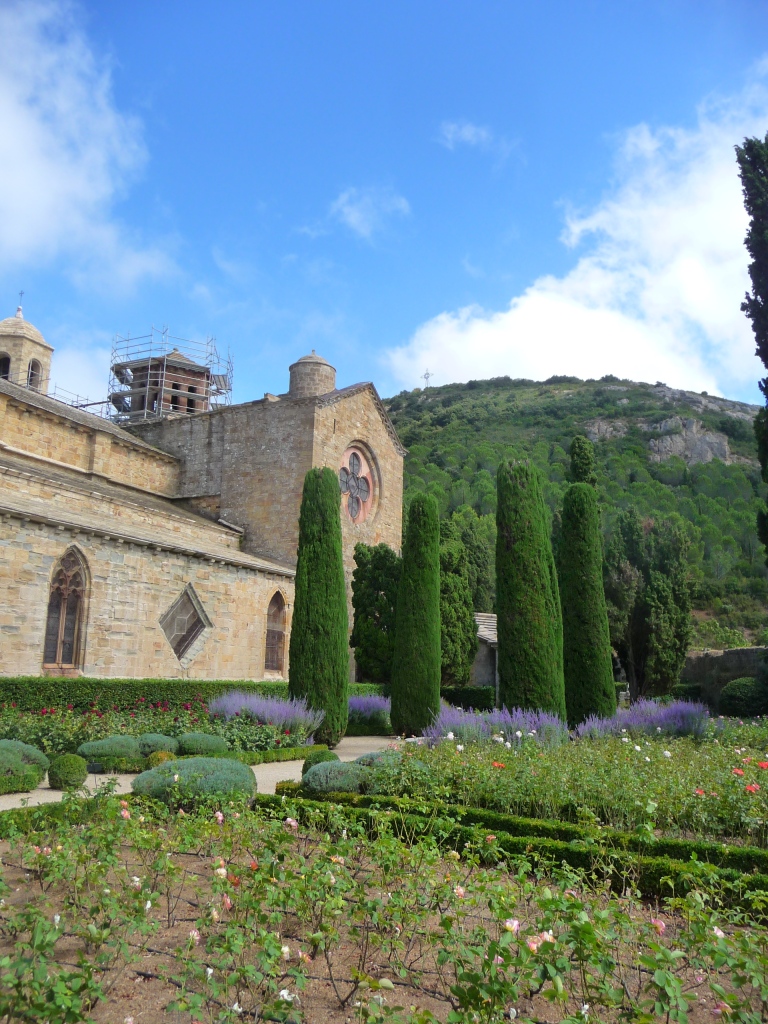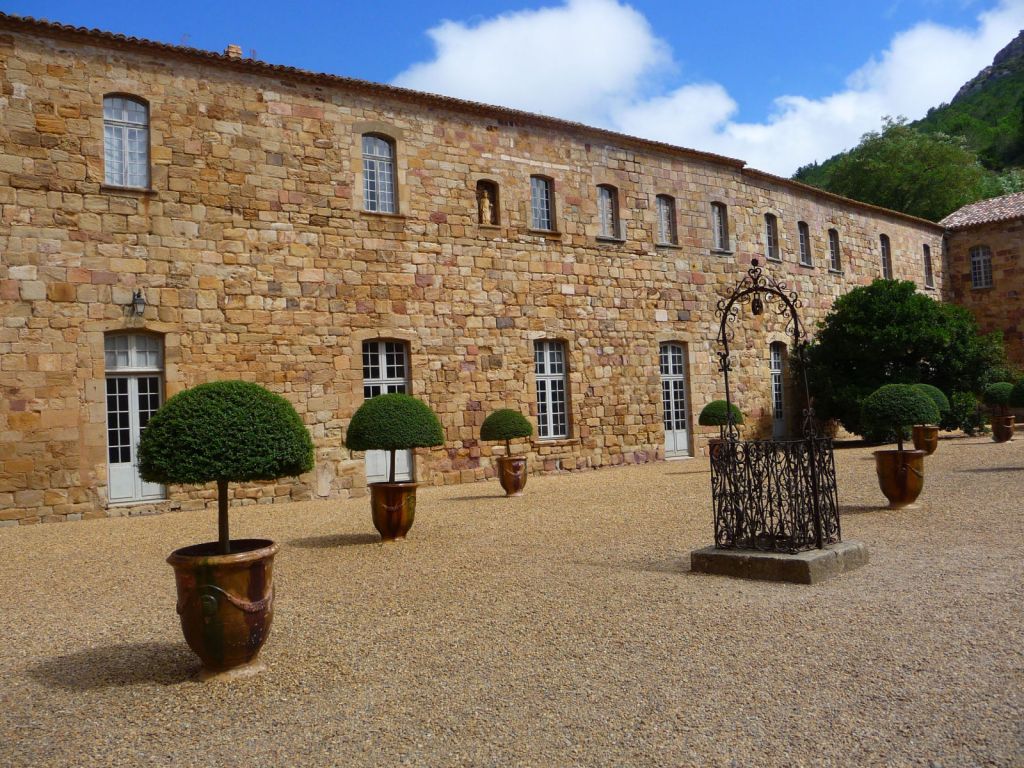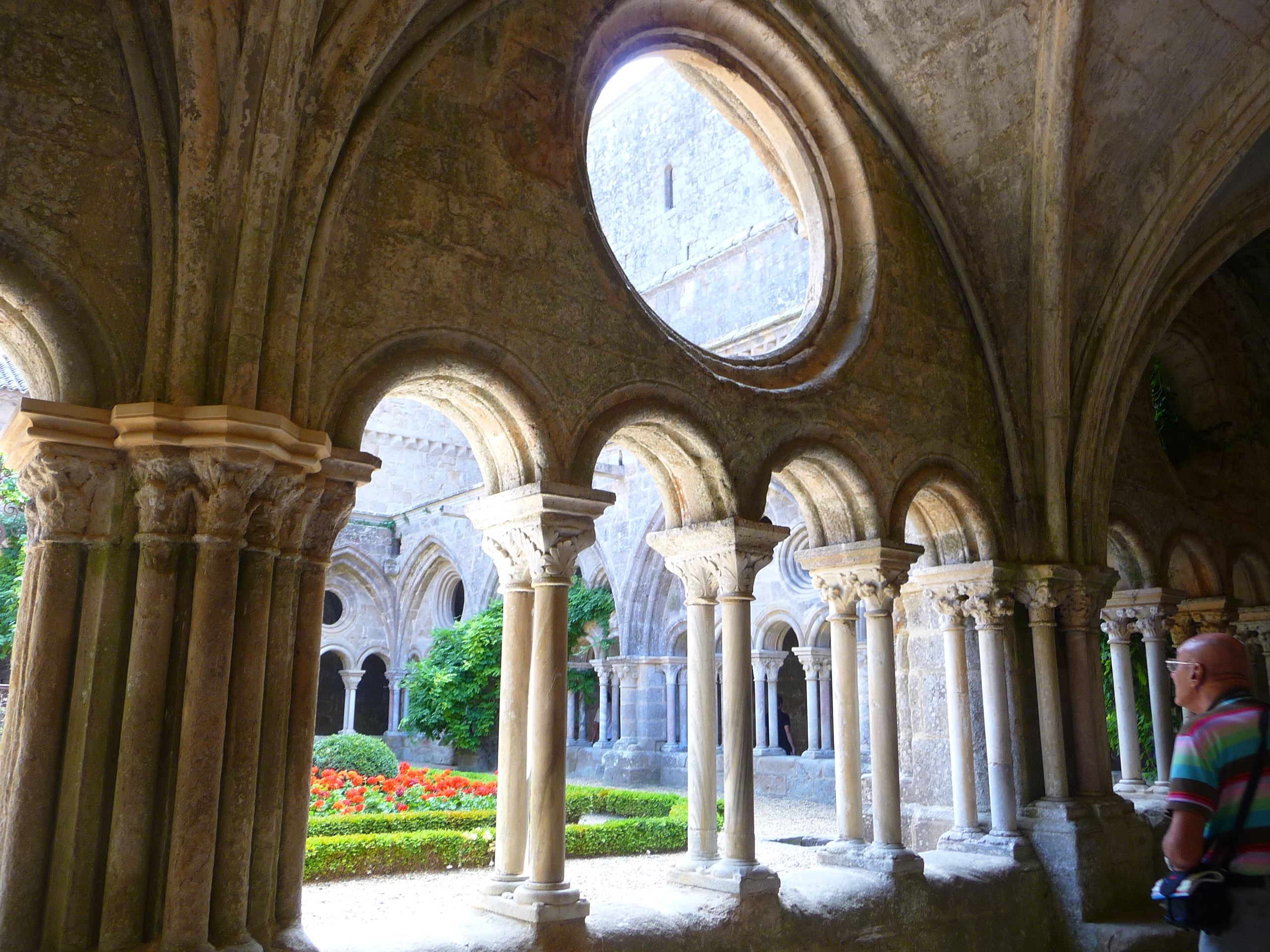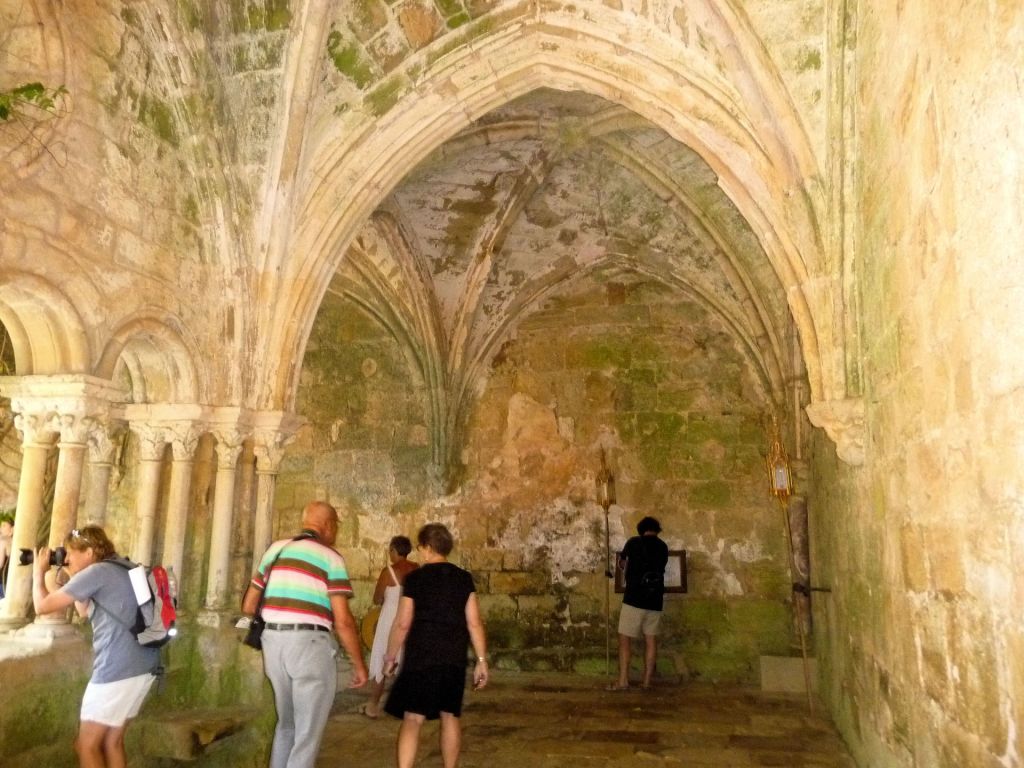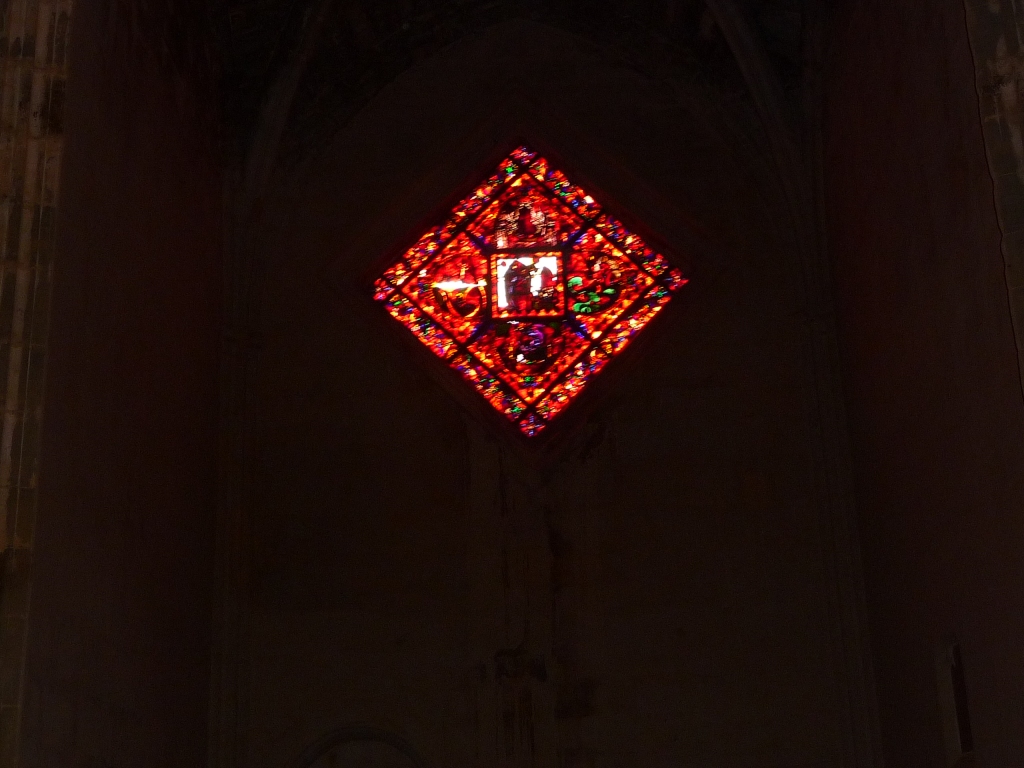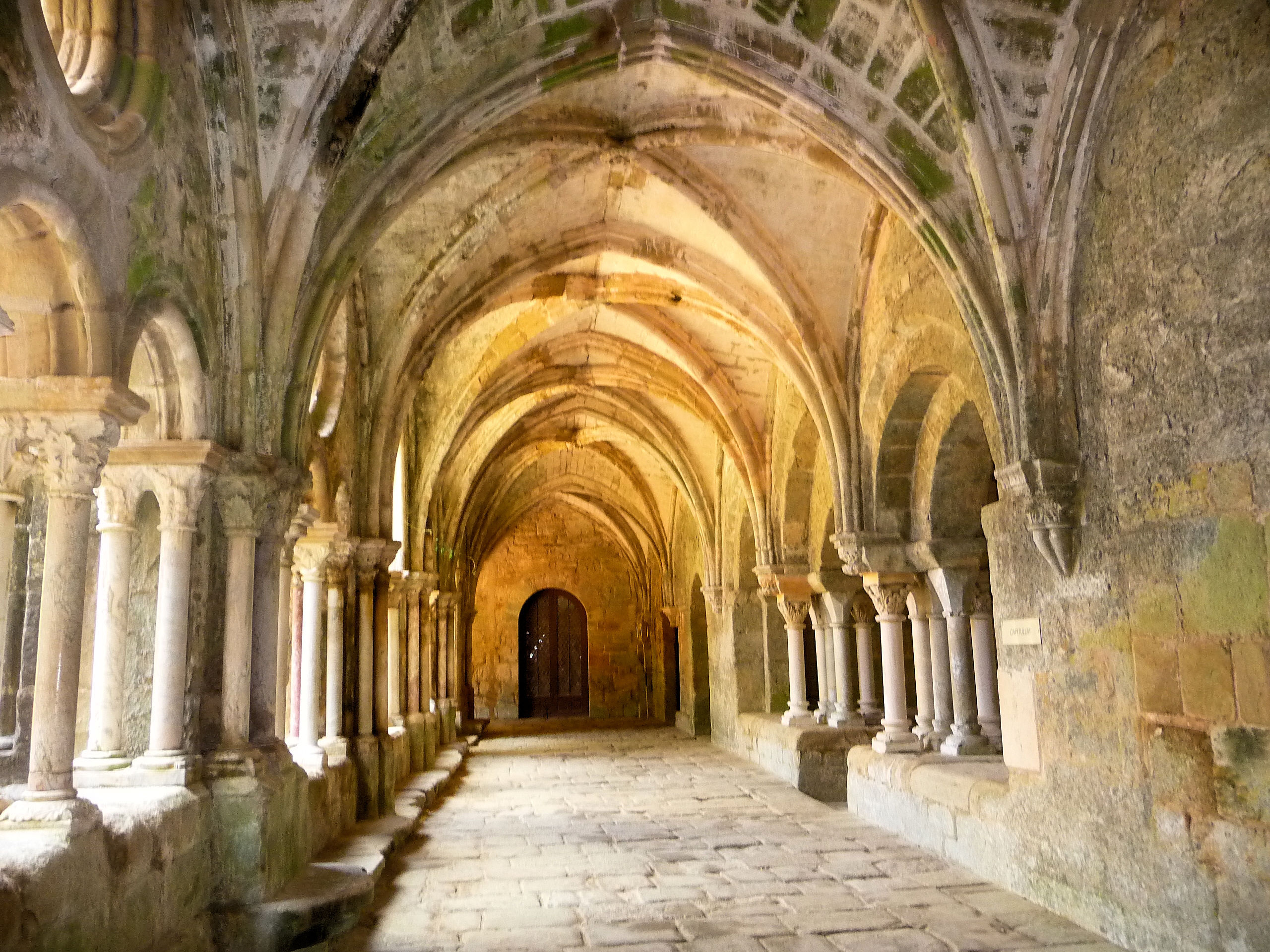I finally made it back to Venice.
I’d wanted to return to La Serenissima for years but the thought of elbowing my way through the crowds, queueing for a restaurant, queueing to visit the Doge’s Palace, queueing even for a Gondola ride, was just too much. I thought of a winter visit: then I read about Venice’s floods, the rain, the mist, the dark medieval streets one has to negotiate at night, and thought again.
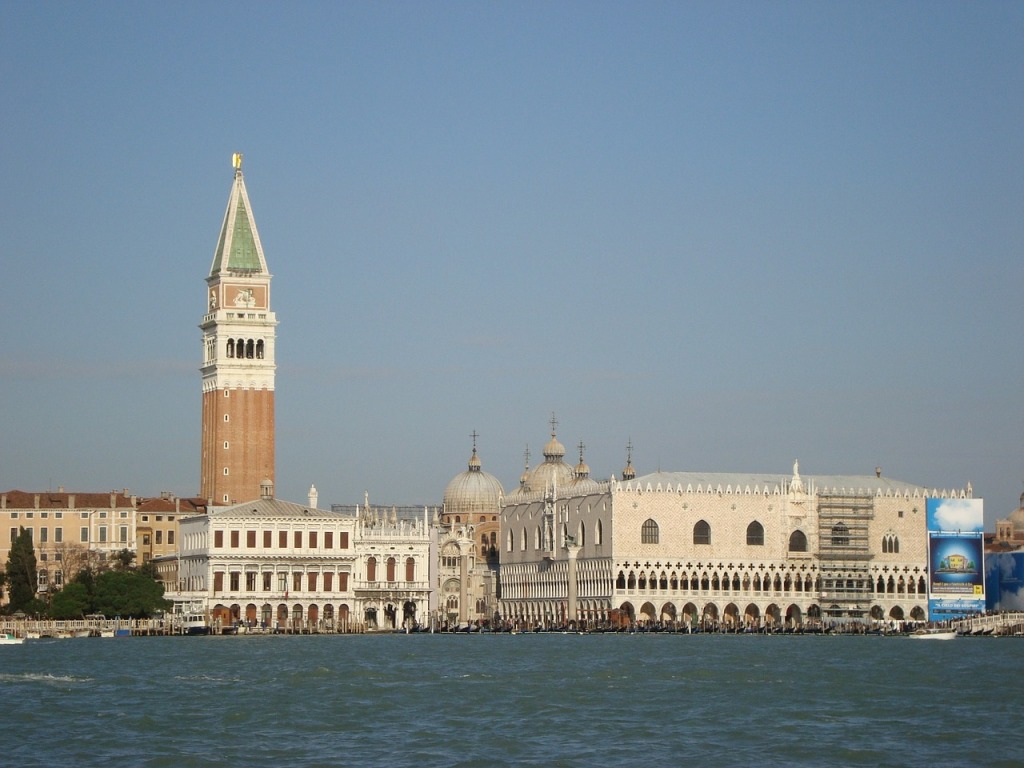
Desire overcame caution however, and two weeks ago I returned to Venice and I can now thoroughly recommend a winter/spring visit. I wouldn’t travel later than the second week in March though, as the number of tourists was increasing daily and the queues were already beginning to lengthen.
Canals and Crumbling Houses
Misty mornings gave way to sunny afternoons and Venice worked her charm as always. Wandering around the maze of streets that lead of Piazza San Marco, stopping for hot chocolate and coffee when we spied a particularly attractive place, walking across the small bridges that span the green waters of the canals and stopping to watch the gondolas gliding under them, in areas away from the crowds, was something we never tired of.


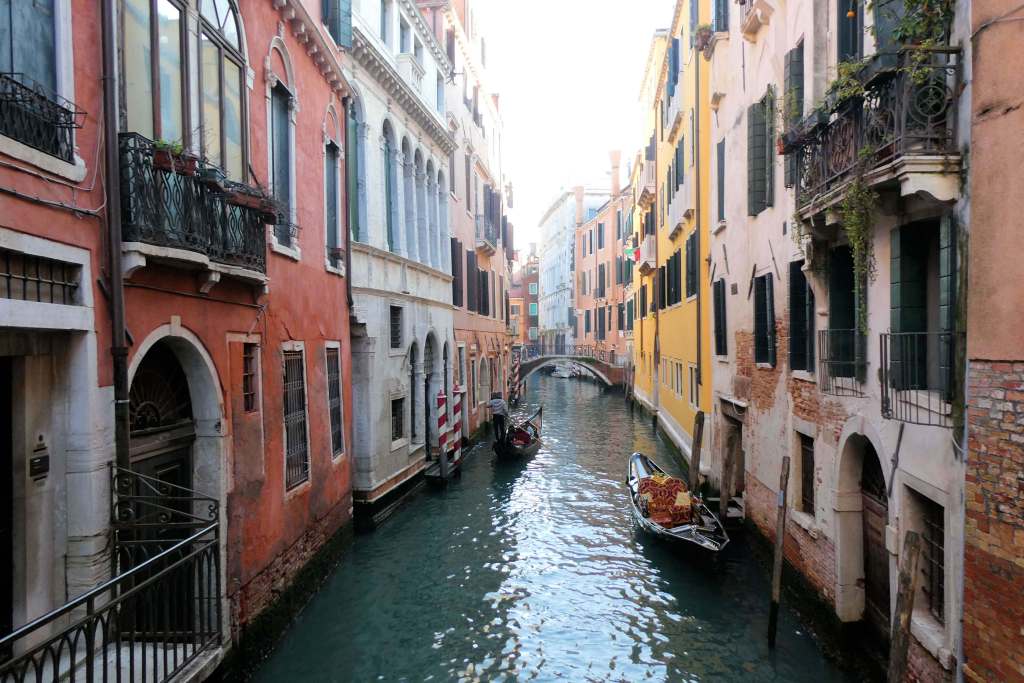
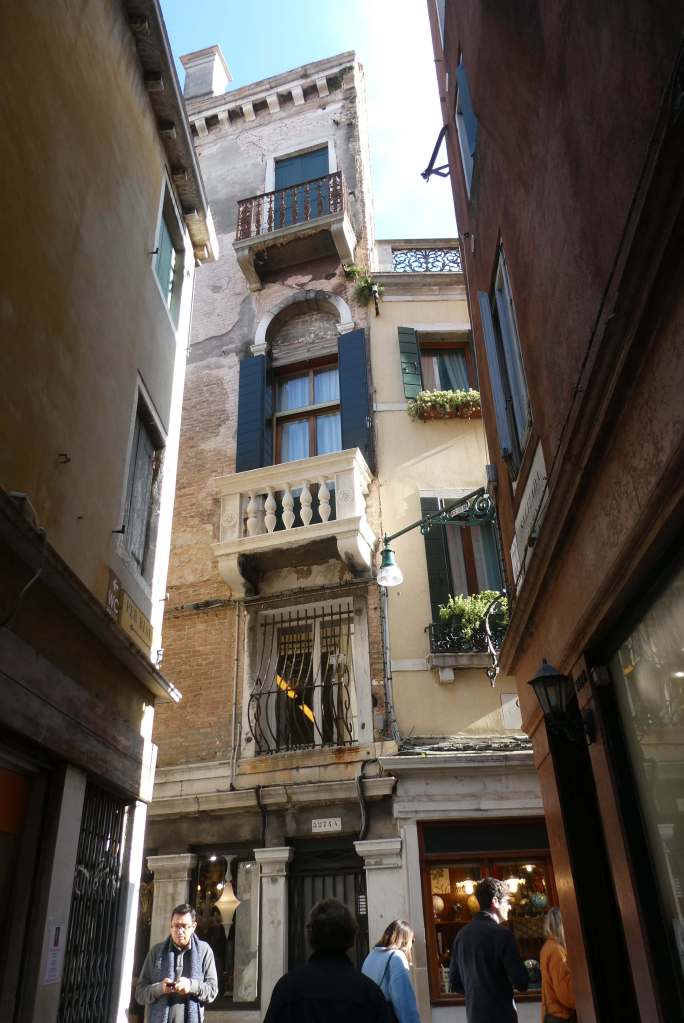



We had a map but still got lost. How could one not in Venice, when crumbling houses and palazzos, fading murals and ancient wooden doorways lured one into areas unknown. The tall buildings hushed the noise from the surrounding streets and often the only sound was that of the gondoliers’ oars swishing through the water as they ferried locals to their doorways on the canals, or transported tourists beyond the tourist spots.
Gondolas – their history

In the 14th century, horses were outlawed from the streets of Venice and the Nobles embraced gondolas as a respectable form of transportation. It then became the way to get around the lagoon’s islands. In order to navigate over the sandbars, the boats had to be flat-bottomed and the gondolier had to stand up to see ahead.
Two hundred years ago, there were 10,000 gondolas. Today there are about 400 licensed gondoliers only. When one dies, the license passes to his widow, so keeping the skill and the tradition in Venetian families.


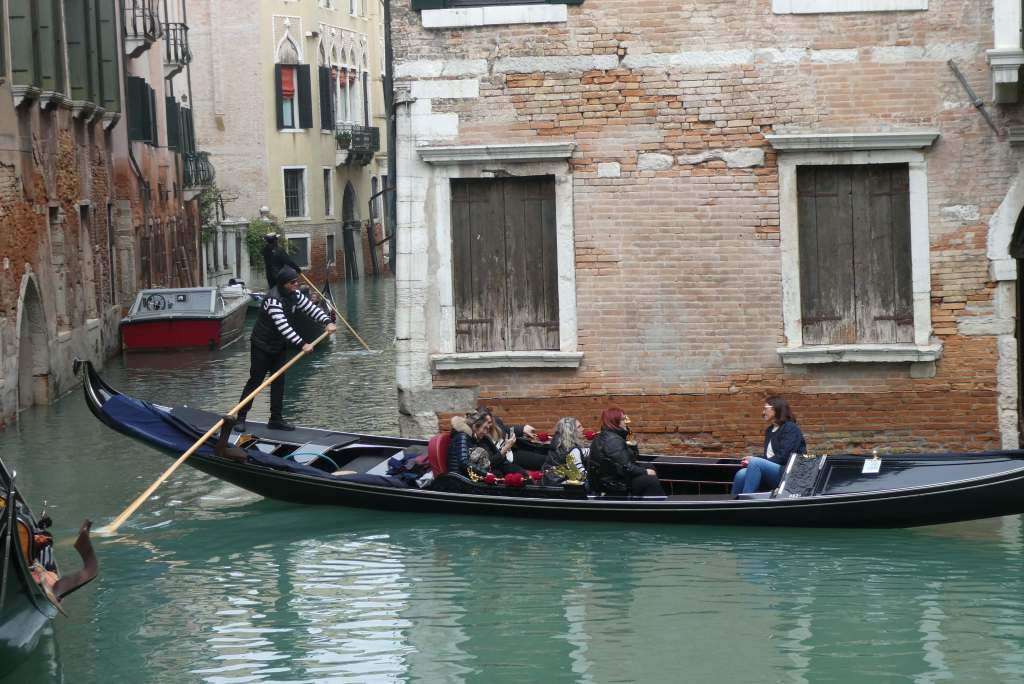
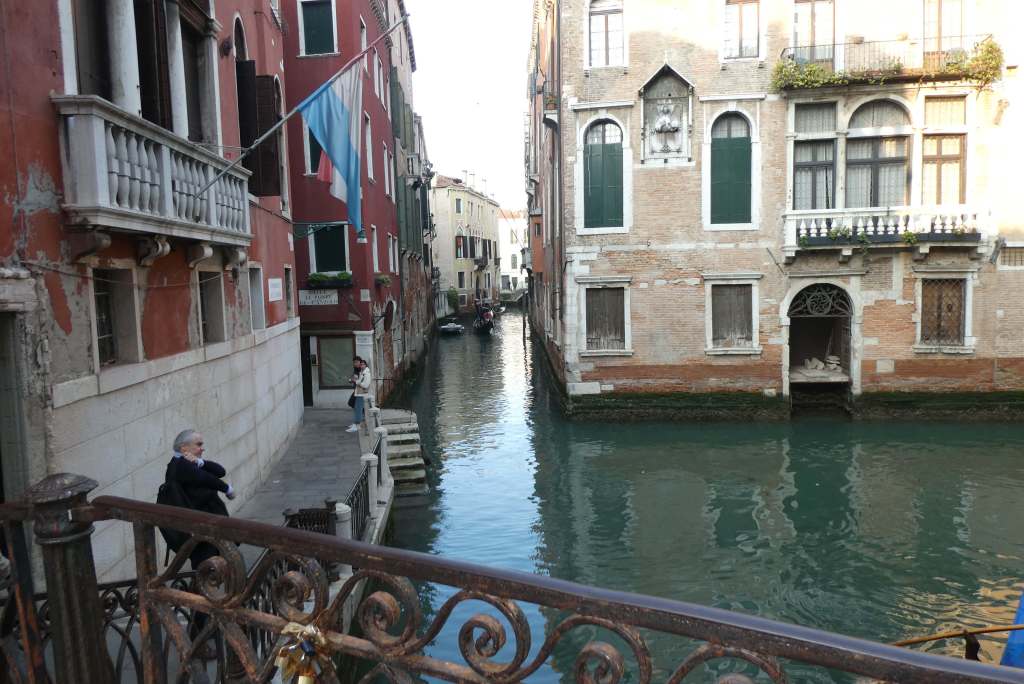

A law enacted in the 17th century decreed that all Gondolas be painted black to eliminate competition between nobles for what were status symbols at that time. Today they are still painted black and decorated extensively, their detailed carvings embellished with gold, and with unique upholstery, trim and detailing. .
St. Mark’s Basilica and The Doge’s Palace

We arrived in a Venice which had more people than I’d expected, even for late spring, but the queues for the main sites were already huge.
Day 1, the time on the board for the queue to St. Mark’s Basilica said 1 hour 15 minutes. Want to jump the queue? Of course, you can, for just 90 Euros, and then you are whisked inside in 10 minutes to shuffle around with all the others. It was a mere 1 hour queue for The Doge’s Palace with the same 90 Euros to jump the queue and by the time we left, six days later, the time queue in both cases, had increased by half an hour.

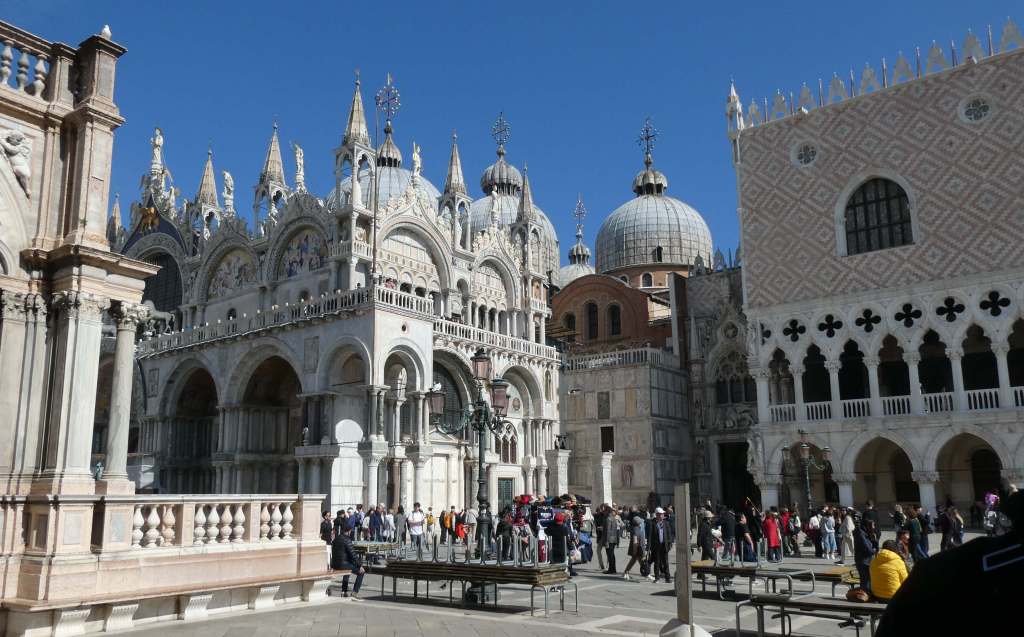






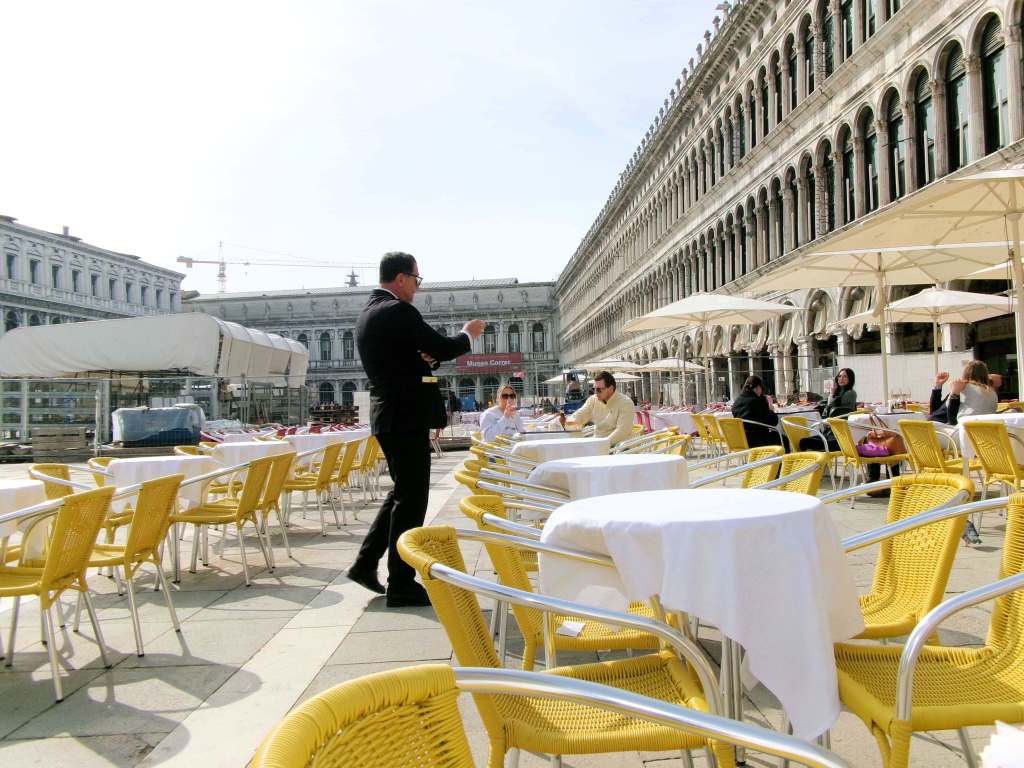




What will happen at Easter and after, when the two local airports welcome increased flights from all over Europe and the cruise ships disgorge their thousands daily, is anyone’s guess.
Rialto Bridge
Of course we spent time window gazing at the expensive Murano glass items in the shops by the Rialto Bridge, the jewellry, the bags, and the multi-coloured pastas, pestis and ricottas packaged for easy packing.





In fact we spent a lot of time in the area, fascinated not just by the food, but by the selfie-taking photographers balancing precariously on the Rialto Bridge, sure that one of them would fall into the murky waters and secretly hoping one of them would.
Grand Canal
We took boat rides on the Grand Canal with both the slow Water Bus and the Vaporetto, the commuters’ form of water transport. Below are just some of the houses along this magnificent waterway, some still occupied by old families, some now rented out, and some now AB&Bs. As you can imagine, photographing from a moving, and sometimes rocking, boat, was not easy.
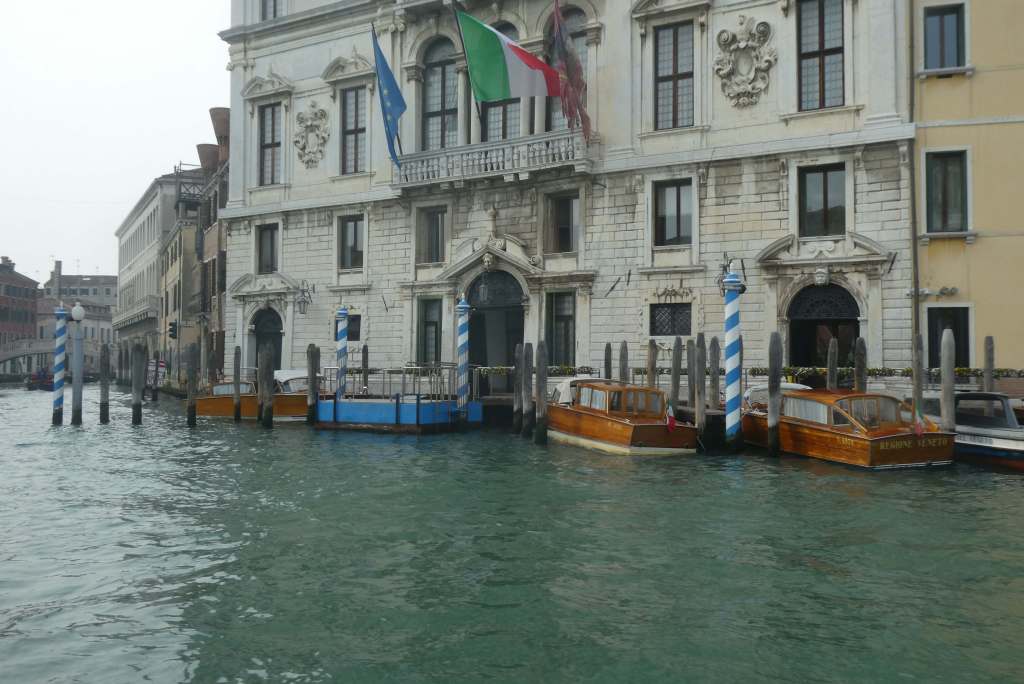








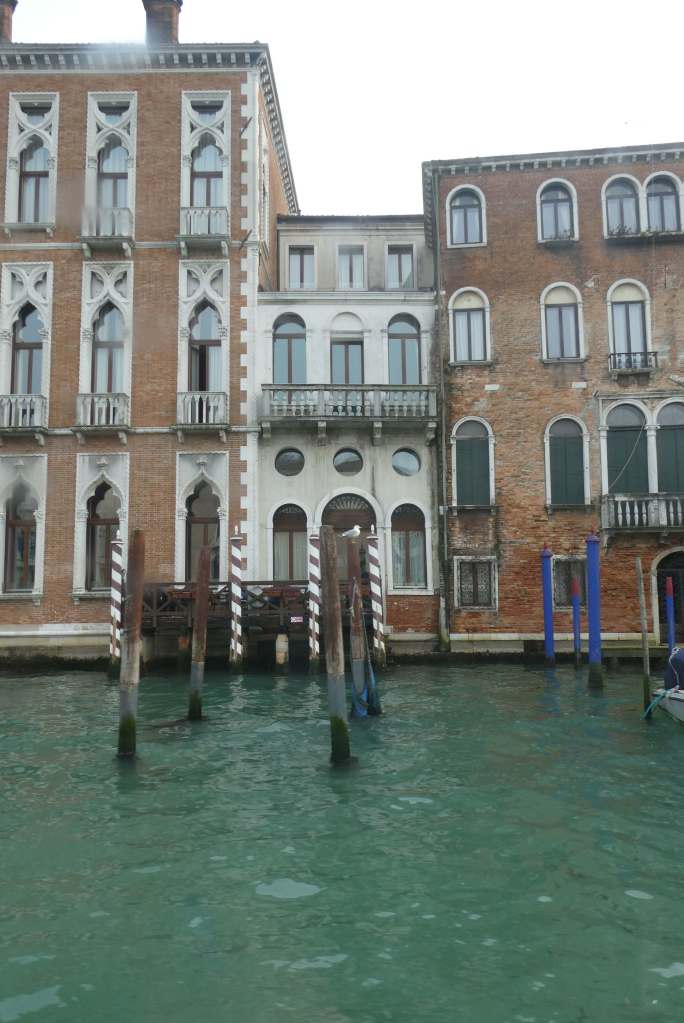
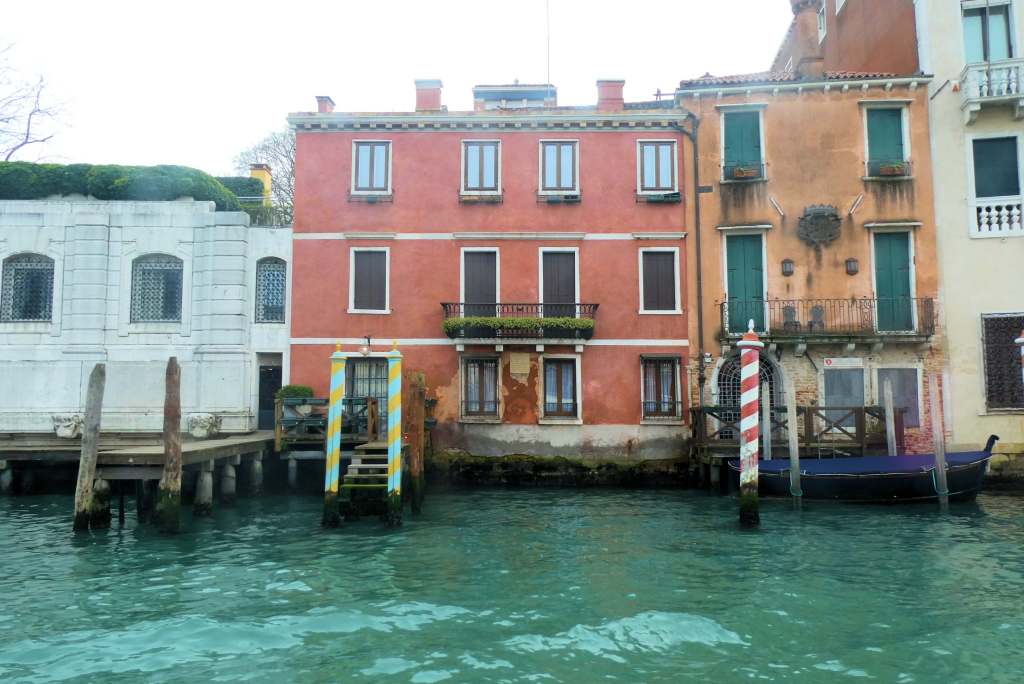
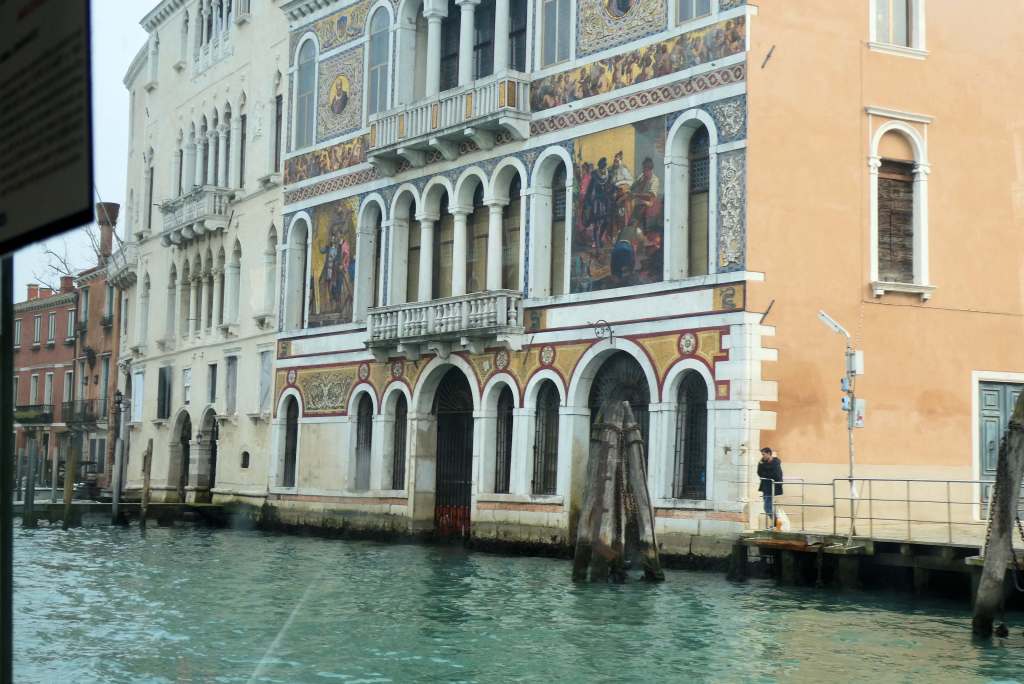

I would recommend a Grand Canal trip to everyone visiting. It’s the only way to see the magnificence that once was Venice, the mansions, palazzos, and houses of minor aristocrats that line this great watery thoroughfare.

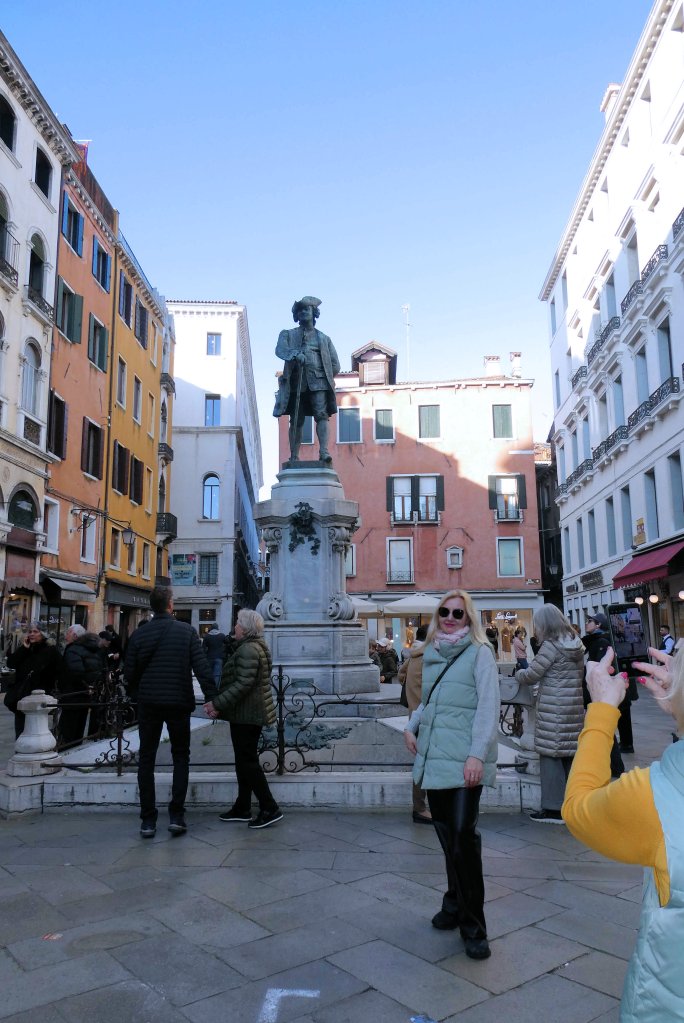
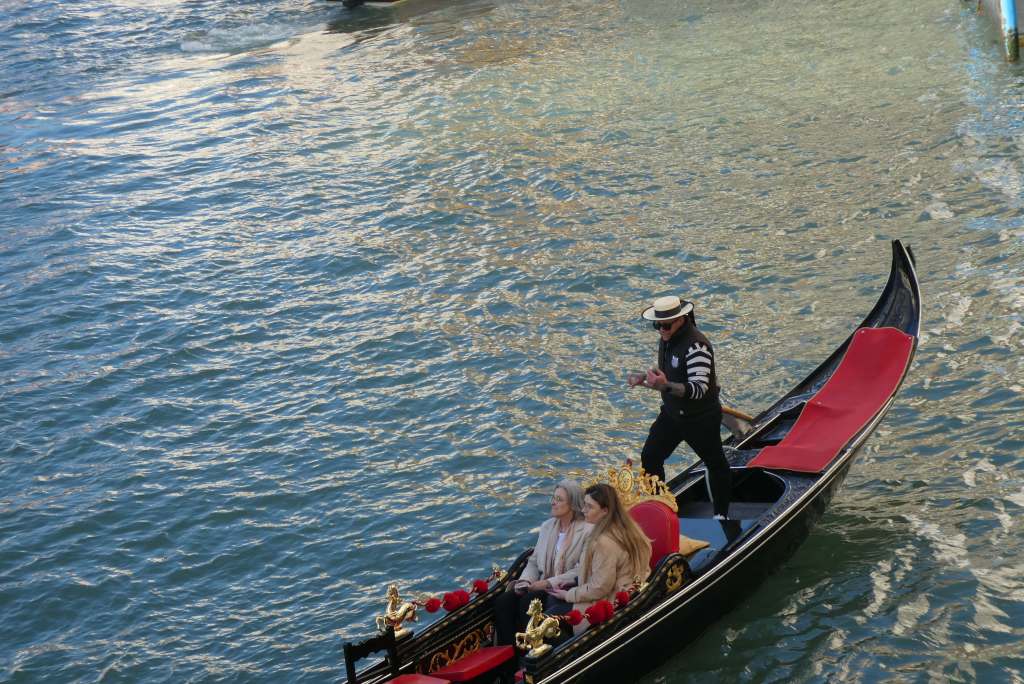

There were churches to visit which we didn’t, islands to visit which we didn’t, and even a Lido which we neglected, as the experience of just being in Venice proved enough to satisfy us. We seemed to retrace our steps most days, always starting at Piazza San Marco for a coffee and then just wandering, lost in the magic of this wonderful city that is Italian, but totally of itself. Venice is the only place in Italy which doesn’t appear to have a statue of Garibaldi but they honour their famous playwright son, the 18th century writer, Carlo Goldoni of Commedia dell ‘art fame, with a bronze statue in Campo S. Bartolomeo, not far from the Rialto Bridge.
I didn’t take a gondola ride as mobility problems made this an impossibility, but I would have done so if I could. After all, where else but in Venice can you experience this. I watched enviously as my friend went off in her black and gold gondola, her straw-hatted gondolier skilfully avoiding the other boats as he steered them across the lagoon and under the Bridge of Sighs. I know, I know, it’s touristy, isn’t it, but who cares when you’re in Venice and doing what Venice is famous for?
And as we walked back to our hotel at night, over bridges under which dark waters flowed, I tried not to think about the chilling figure in the red cloak that haunts the Venice of Nicholas Roeg’s classic film Don’t Look Now – but it was hard to dispel the image, it is so part of the Venice I know.
I have plans for a return visit in 2025. What better recommendation than that?
Getting from the airport to Venice hotels:
Water Taxis – 30-45 minutes, from 140 euros (1-4 people)
Shared Water Taxis from 60 Euros per person.
Allilaguna Line – Comfortable water bus to Piazza San Marco takes 1 hr 14 mins with stops along the way. 15 Euros
Vaporetto – fast commuter boat takes slightly more time as it stops more often, but you may have to stand. Costs 7.5 Euros.
Bus from airport to Train station, then taxi to ferry, then boat.
Whichever way you travel, you eventually have to go by water to reach San Marco & surroundings but you can stay on the mainland and travel daily by waterbus.

